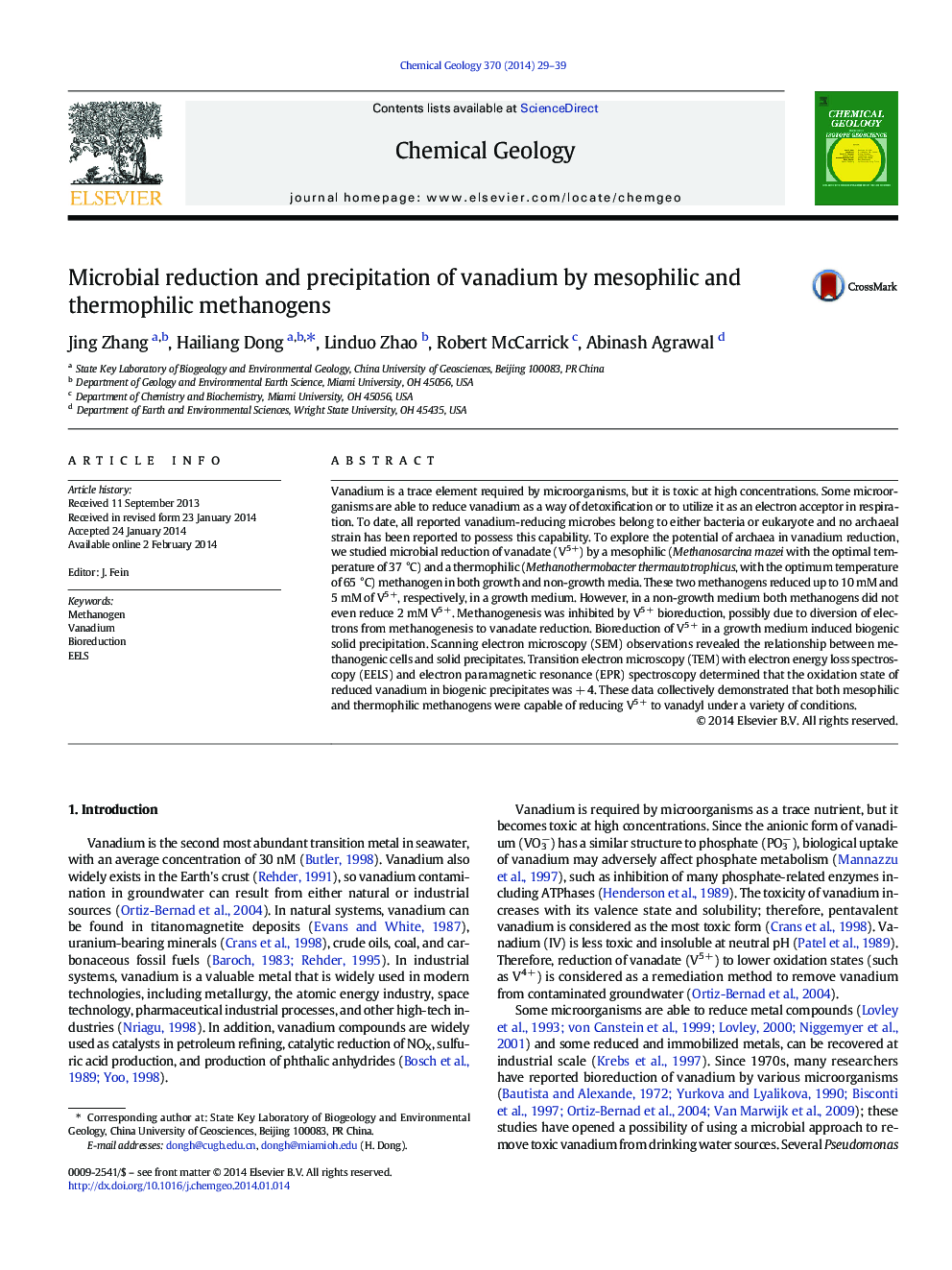| کد مقاله | کد نشریه | سال انتشار | مقاله انگلیسی | نسخه تمام متن |
|---|---|---|---|---|
| 4698781 | 1637600 | 2014 | 11 صفحه PDF | دانلود رایگان |
• Mesophilic and thermophilic methanogens are capable of reducing vanadate to vanadyl.
• Methanogenesis was inhibited by V5 + bioreduction.
• Amorphous biogenic V(IV) solid formed after bioreduction.
Vanadium is a trace element required by microorganisms, but it is toxic at high concentrations. Some microorganisms are able to reduce vanadium as a way of detoxification or to utilize it as an electron acceptor in respiration. To date, all reported vanadium-reducing microbes belong to either bacteria or eukaryote and no archaeal strain has been reported to possess this capability. To explore the potential of archaea in vanadium reduction, we studied microbial reduction of vanadate (V5 +) by a mesophilic (Methanosarcina mazei with the optimal temperature of 37 °C) and a thermophilic (Methanothermobacter thermautotrophicus, with the optimum temperature of 65 °C) methanogen in both growth and non-growth media. These two methanogens reduced up to 10 mM and 5 mM of V5 +, respectively, in a growth medium. However, in a non-growth medium both methanogens did not even reduce 2 mM V5 +. Methanogenesis was inhibited by V5 + bioreduction, possibly due to diversion of electrons from methanogenesis to vanadate reduction. Bioreduction of V5 + in a growth medium induced biogenic solid precipitation. Scanning electron microscopy (SEM) observations revealed the relationship between methanogenic cells and solid precipitates. Transition electron microscopy (TEM) with electron energy loss spectroscopy (EELS) and electron paramagnetic resonance (EPR) spectroscopy determined that the oxidation state of reduced vanadium in biogenic precipitates was + 4. These data collectively demonstrated that both mesophilic and thermophilic methanogens were capable of reducing V5 + to vanadyl under a variety of conditions.
Journal: Chemical Geology - Volume 370, 26 March 2014, Pages 29–39
